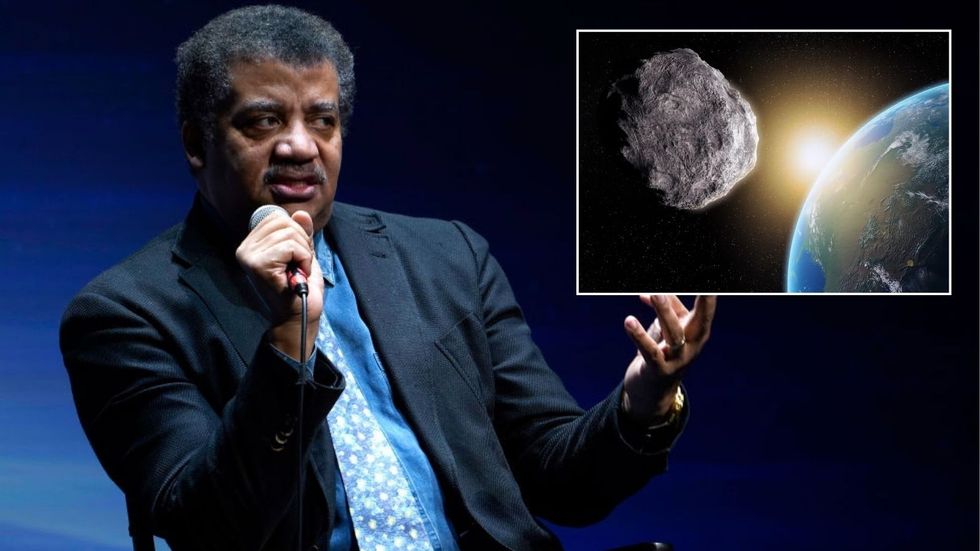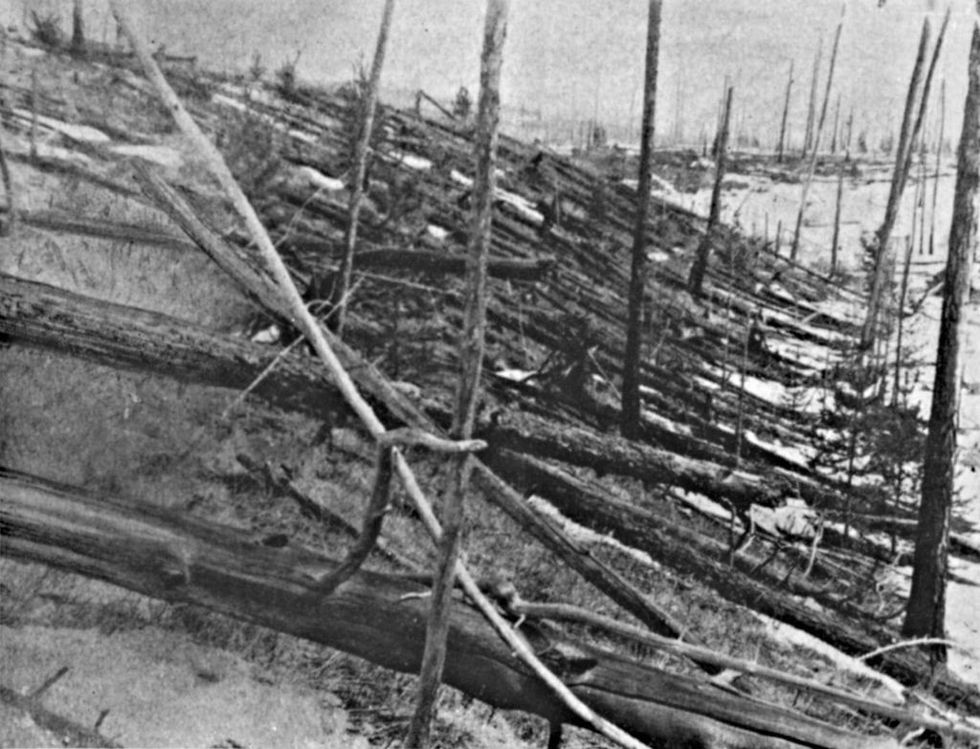Sample of the asteroid Bennu goes on public display
GB News
The blast would be 500 times more powerful than the atomic bomb dropped on Hiroshima during World War Two
Don't Miss
Most Read
Trending on GB News
Renowned astrophysicist Neil deGrasse Tyson has issued a stark warning about an asteroid that now has a one-in-fifty chance of striking Earth.
The space rock, designated as Asteroid 2024-YR4, currently has a 2.3 percent probability of hitting our planet on December 22, 2032, according to Nasa.
This represents nearly double the chance initially calculated when the asteroid was first identified as a potential threat last December.
"Now might be a bad time to reduce spending on Science. Just sayin'," Tyson posted on X on Friday.

Renowned astrophysicist Neil deGrasse Tyson has issued a stark warning about an asteroid that now has a one-in-fifty chance of striking Earth
Getty
The "mansion-sized" asteroid measures between 130 and 300 feet wide, experts say. If it were to strike Earth, the impact would create an explosion equivalent to 7.7 megatons of TNT, leaving a crater 3,000 feet wide.
The blast would be 500 times more powerful than the atomic bomb dropped on Hiroshima during World War Two.
A simulation video demonstrates the devastating potential impact on an urban area, showing how the collision would level buildings across a city-sized region.
The current "risk corridor" for potential impact stretches from South America across the Atlantic Ocean to sub-Saharan Africa, then across the Arabian Sea to India.
MORE LIKE THIS:
- Nasa makes 'emergency decision' as likelihood of 'city-killing' asteroid hitting Earth increases
- Risk of massive asteroid the size of a football pitch hitting Earth doubles in a week as Nasa warns explosion would be 150 times greater than A-bomb
- Asteroid wider than football pitch could collide with Earth as scientists reveal how 'sacrificial spacecraft' could defend the planet
Former Canadian astronaut Chris Hadfield told LBC News this week that the asteroid is likely a stony formation.
"We think — because of the way it reflects light — that it's probably a stony asteroid, a bunch of bits of other things that have slowly coalesced together," he explained.
This composition suggests it would likely remain intact upon entering Earth's atmosphere, rather than breaking apart. The impact would send rock fragments shooting outward at speeds exceeding 10 miles per second.
Scientists outline two possible scenarios if the asteroid reaches Earth. In the first scenario, a direct surface impact would devastate an area the size of Washington, DC. Alternatively, 2024-YR4 could explode in mid-air like the Tunguska asteroid did in 1908.
The Tunguska event, while avoiding surface impact, caused the most explosive impact in recorded history when it detonated over Siberia.
That blast was equivalent to 50 million tons of TNT, flattening 80 million trees across 830 square miles of forest and reportedly killing three people.
The asteroid's discovery comes amid a major crisis in scientific funding.
The National Science Foundation (NSF), America's largest scientific research funder, froze its grant approval process in January 2025 following an executive order from President Trump.

The Tunguska event caused the most explosive impact in recorded history
GETTY
The agency has been told to prepare for losing half its staff and two-thirds of its funding. Other federal science agencies are also facing significant cuts and layoffs.
Scientists, including astronomers, have expressed serious concerns about the impact on research capabilities, particularly regarding asteroid monitoring efforts.
The James Webb Space Telescope (JWST) is scheduled to observe the asteroid in May, potentially helping astronomers narrow down its trajectory.
If 2024-YR4 is determined to pose a serious threat, humanity has already demonstrated a potential defence.
Nasa's DART mission successfully altered an asteroid's orbit in September 2022 by deliberately crashing a spacecraft into it.
"If you [hit] it early enough, then a tiny angular change will cause it to miss the Earth," Hadfield explained.
Despite the concerning calculations, experts emphasise there's still a 97.7 percent chance the asteroid will safely pass Earth.
MIT professor Richard P Binzel explains that changes in probability calculations are normal, saying: "We can expect the probability numbers to wobble around a bit. This is simply how scientific data measurements play out."
Hadfield compared tracking the asteroid to a game of billiards: "The moment you release the shuffle board weight or you hit the pool ball, you're pretty sure where it's gonna go, but it's not 100 percent sure."







